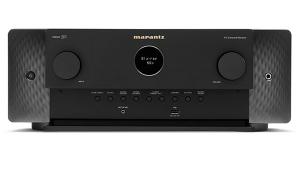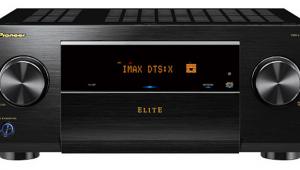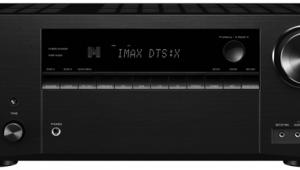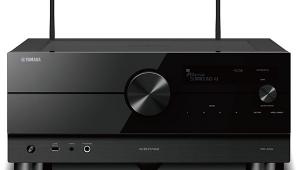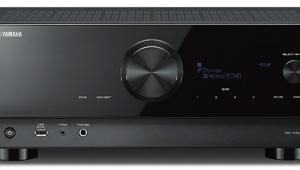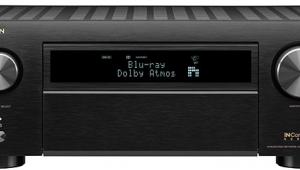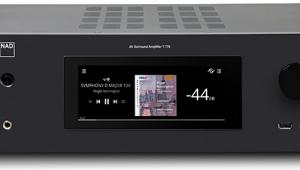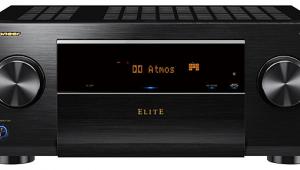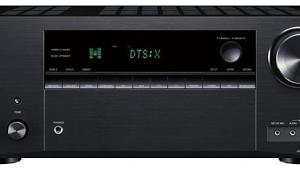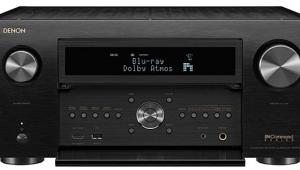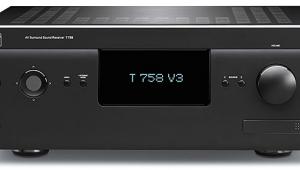Rotel RSX-1562 A/V Receiver Page 2
Woody Allen’s Midnight in Paris (DVD, Dolby Digital 3.0) may not have been strictly a 5.1-channel affair with its silent surround channels, but it did keep dialogue in the center while using the front left and right channels for ambience. This novel approach was a huge improvement over most of the auteur’s previous disc releases that typically feature a bland mono signal spread over two channels. The receiver delivered vocals in a soft and natural manner, with sibilants downplayed, but other consonants clear enough to be heard. The occasional Gallic accordion—to my ears, a toppy and revealing instrument like the violin—had the kind of warmth that indicates voicing by someone with an ear for music. But the receiver’s polite top end made the stereo-ambience effects elusive. My awareness of them flitted in and out—sometimes they were so subtle that I had to put an ear to one of the speakers to make sure they were operating.
 Rise of the Planet of the Apes (BD, DTS-HD Master Audio) had a busier soundtrack than the previous two selections, with a score punctuated by pounding drums and other pandemonium. For the first time, I noticed the receiver’s tendency to blur complex imaging information. When there were just a few elements in the soundfield surrounded by silence, the receiver delivered everything with its usual sophistication. But when there were numerous overlapping elements, this Class-D receiver tended to mask—as opposed to layer—some of them, an effect that was verified when I later swapped in a good Class-AB reference receiver. This was especially noticeable when the drum decay was juxtaposed against other sounds. I didn’t notice it with, say, the crudely streamed soundtrack of a Netflix-conveyed movie—I don’t expect miracles with that kind of content. But when the delivery medium and content demanded high resolution of a wide range of images within a busy soundfield, the receiver fell a bit short of the best I’ve heard.
Rise of the Planet of the Apes (BD, DTS-HD Master Audio) had a busier soundtrack than the previous two selections, with a score punctuated by pounding drums and other pandemonium. For the first time, I noticed the receiver’s tendency to blur complex imaging information. When there were just a few elements in the soundfield surrounded by silence, the receiver delivered everything with its usual sophistication. But when there were numerous overlapping elements, this Class-D receiver tended to mask—as opposed to layer—some of them, an effect that was verified when I later swapped in a good Class-AB reference receiver. This was especially noticeable when the drum decay was juxtaposed against other sounds. I didn’t notice it with, say, the crudely streamed soundtrack of a Netflix-conveyed movie—I don’t expect miracles with that kind of content. But when the delivery medium and content demanded high resolution of a wide range of images within a busy soundfield, the receiver fell a bit short of the best I’ve heard.
The Orchestra Doesn’t Lie
I hoped to learn more when I cued up the CD release of New Year’s Concert 2012 with Mariss Jansons conducting the Vienna Philharmonic in a choice selection of sprightly Strauss waltzes. Sony Classical is well equipped to record the world’s finest string section, and listening on alternative equipment revealed excellent detail. So when I heard the violins blurring—both the leading edge and the inner texture—I attributed it to the receiver’s Class-D amp. There were other moments when it seemed the Rotel could do no wrong, especially when one section of the orchestra was playing at a low-to-moderate level against a temporary backdrop of silence. But at higher volume levels, resolution diminished. Amplifier clipping didn’t seem to be the problem; the receiver was able to produce satisfying levels of sound at half its volume control’s range and wasn’t being overdriven. But I had the impression that the Class-D pulse train was leaving the station with less than a full load of imaging information.
Oscar Peterson’s Unmistakable CD showed the receiver in a more positive light. Though this was a computer-controlled “reperformance”—based on live performance tapes—the piano was a real Bösendorfer Imperial Concert Grand recorded at Abbey Road. The receiver lovingly reproduced the timbre of the piano with rich overtones and the dynamic excitement of Peterson’s touch. Other piano recordings came through with widely varying timbres, but the results were always satisfactory.
Taking advantage of the receiver’s Bluetooth capability, I plugged in the USB dongle, paired the receiver with an iPod touch, and played the Ramones classic album Rocket to Russia. Bear in mind that these tracks were ripped from CD to MP3 at 192 kbps. That data rate is well within the Bluetooth spec. The stream never glitched, and essential elements like Joey’s voice and Tommy’s drums emerged in decent form. The lossy digital meat grinder deprived Johnny’s guitar textures of some nuance (it remains astonishing to me how one man could get so many sounds out of a cheap guitar), but that was inevitable given all those digital transformations (CD/MP3/Bluetooth). In fact, the receiver’s smoothing effect suited the limitations of the degraded signal.
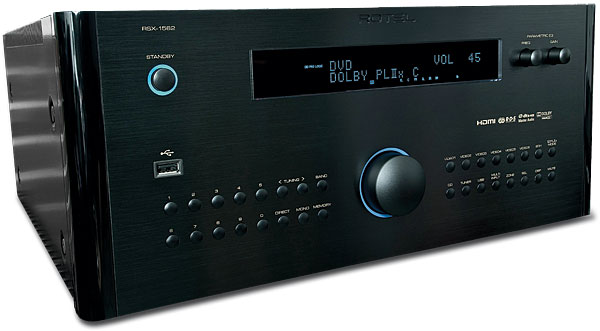
My roommate’s iPhone and iPad also streamed to the receiver with a variety of classical and pop music. The receiver handled Adele’s “Someone Like You” astonishingly well. Its sparse instrumentation—just voice and piano—were an easy lift for the Rotel. The recording has been dynamically compressed and was probably subject to other insidious Pro Tools manipulations, but the singer’s masterful changes of tone thrived in the kingdom of Class D. If someone played me this track and nothing else, I’d be forced to conclude that this is a reference-quality receiver.
Looking over my review of the RSX-1560, I wondered why my reaction to the RSX-1562 was more mixed. Did Rotel’s implementation of ICEpower change in the new model? The company says no. But this is essentially a new kind of receiver, one that falls outside my normal frame of reference, and I learn more about it every time I use it. I don’t offer this as either an excuse or a mea culpa, just as an explanation.
The Rotel RSX-1562 is a significant step up from its predecessor in several ways. The iOScompatible USB jack and Bluetooth wireless connectivity make the limited feature set more attractive. As an audiophile manufacturer, Rotel may never embrace room correction, but I hope it will consider adding autosetup for newbies and a low-volume mode such as Dolby Volume. Sound quality ranged from average to amazing; and highly critical listeners will no doubt conclude they want more of the consistency that a similarly high-priced, Class-AB receiver would provide. But for anyone who denies that surround receivers need to take a more innovative and rigorous approach to energy efficiency, I can only say: Pass the shovel.
